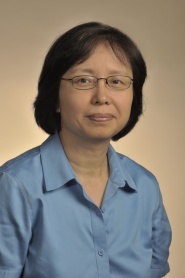非常抱歉,
你要访问的页面不存在,
非常抱歉,
你要访问的页面不存在,
非常抱歉,
你要访问的页面不存在,
验证码:

职称:Professor
所属学校:University of Kentucky
所属院系: Physiology
所属专业:Physiology, General
联系方式:(859) 218-1361
Ph.D. Peking Union Medical College, China and University of Virginia 1994 Research Description: Current research in our laboratory focuses on vascular mechanisms of type 2 diabetes associated hypertension and blood pressure circadian rhythm disruptions More than 170 million people worldwide have diabetes. Hypertension occurs more frequently in these diabetic patients than in those without diabetes. Moreover, when hypertension is superimposed on diabetes, the progression of diabetic complications becomes significantly more severe. However, the mechanisms by which diabetes cause an increase in the incidence of hypertension are not well understood. We and others have found that type 2 diabetic mouse models, db/db mice and high fat-diet fed mice, are hypertensive and vascular smooth muscle tissues isolated from them manifest contractile hyper-reactivity. One of our goals is to elucidate the molecular mechanisms underlying such vascular smooth muscle hyper-reactivity and its role in diabetes associated hypertension. Currently, we are focusing on the role of CPI-17, a myosin phosphatase inhibitory protein that is preferentially expressed in smooth muscle and plays an important role in regulating physiological smooth muscle contraction. We found that CPI-17 is activated and up-regulated in vascular smooth muscle of type 2 diabetic mice. Blood pressure has a circadian pattern characterized by a low period during sleep; an early morning, post awakening rise; and a high plateau period while the subject is awake. There is increasing evidence that not only does the average level of blood pressure, but particularly an abnormal circadian blood pressure rhythm with a decreased fall in night time blood pressure, determine the development of diabetic complications and cardiovascular outcomes. The mechanisms that account for the abnormal blood pressure diurnal pattern in type 2 diabetes remain largely unknown. We are currently exploring the role of dysregualted core clock genes and vascular smooth muscle contractile diurnal variations in diabetes associated blood pressure circadian rhythm disruptions. Combinations of the state-of-the-art techniques with classical physiological and biochemical methods were used to pursue our goals. These include radiotelemetry monitoring mouse blood pressure, smooth muscle specific transgenic and knockout mouse models, isometric contraction determination with isolated vascular tissues, microarray, real-time PCR, small interference RNA and adenoviral mediated gene transfer.